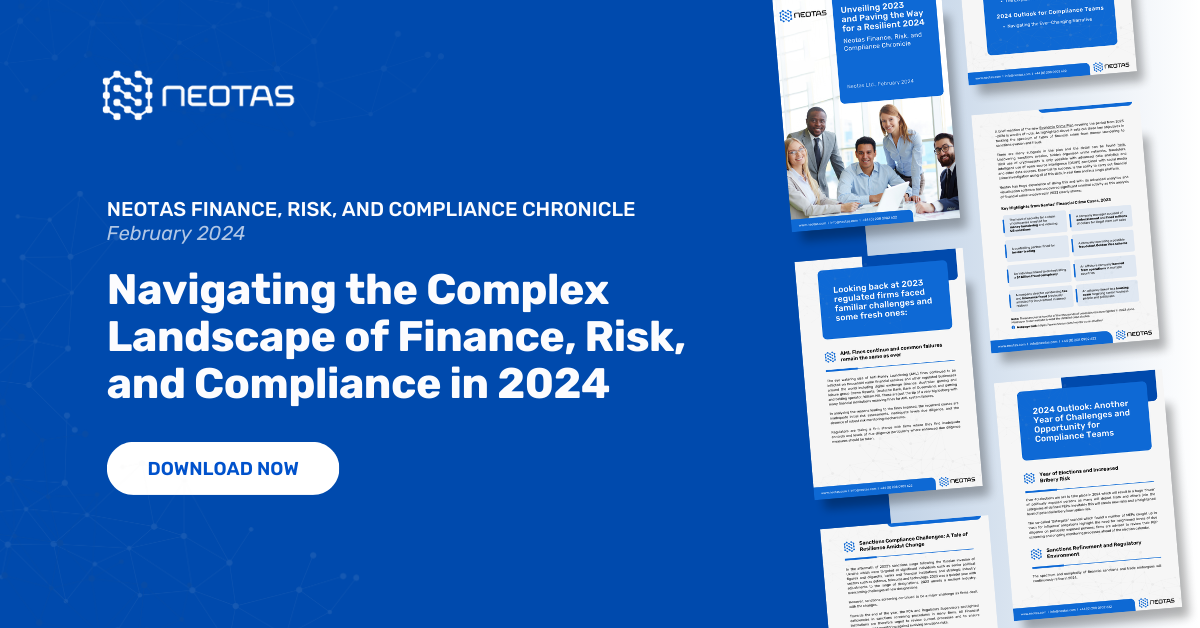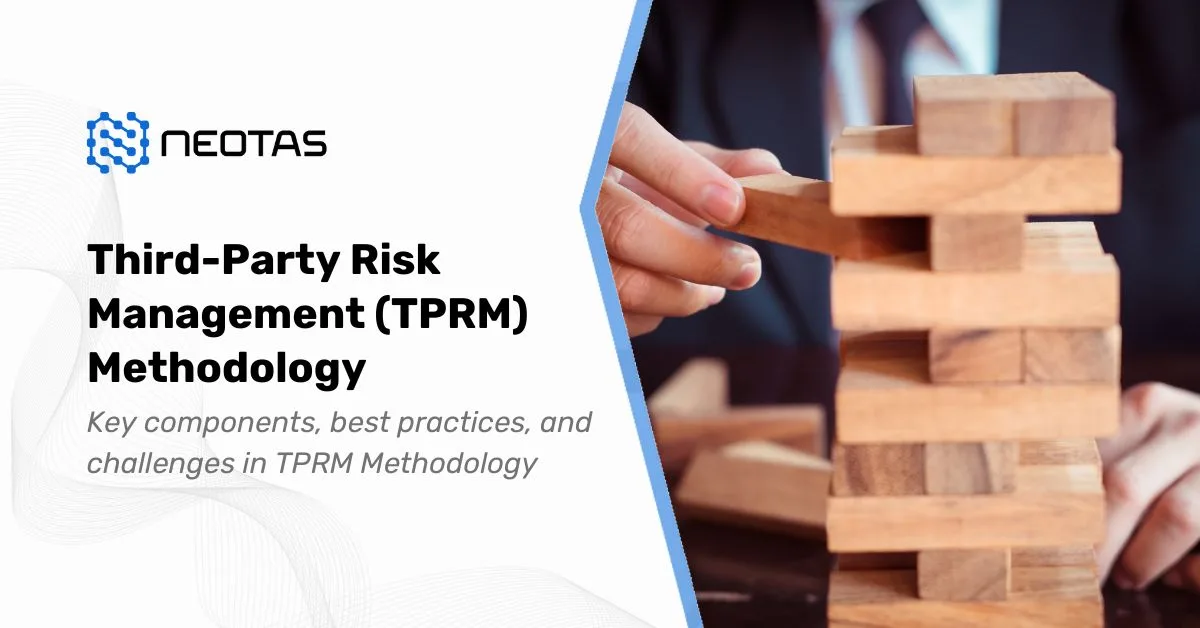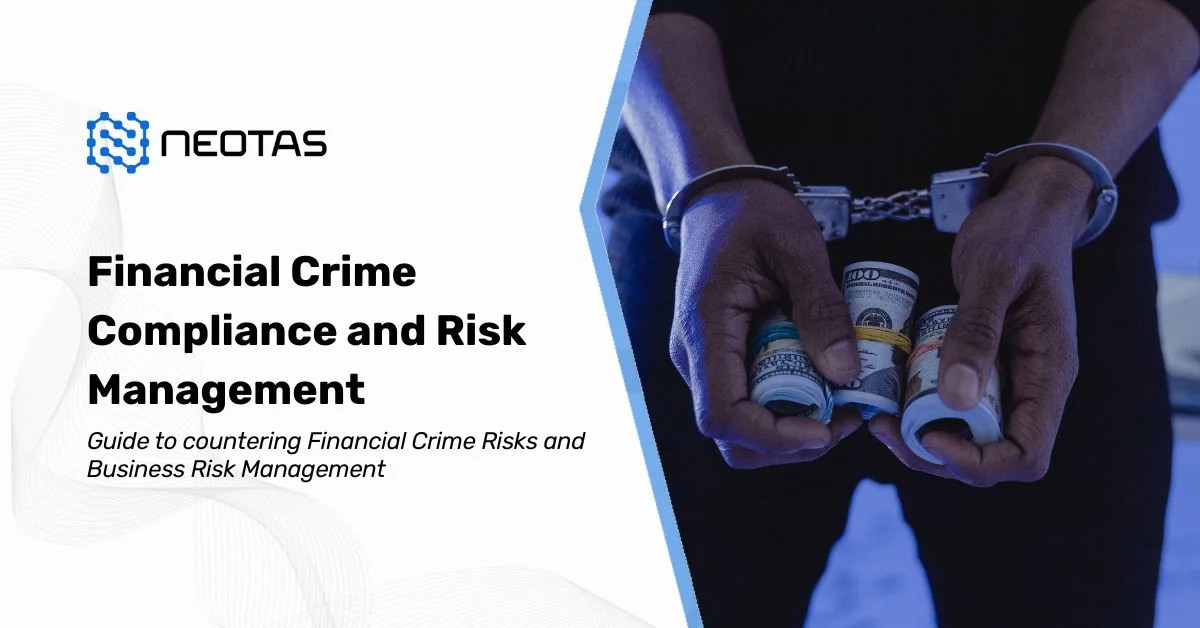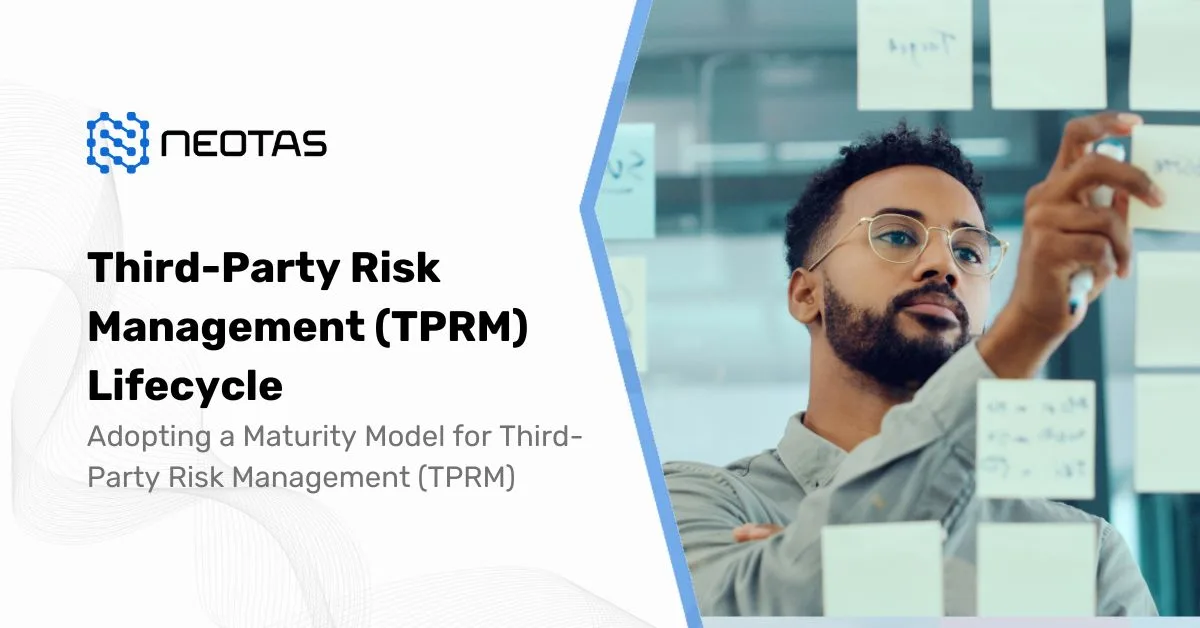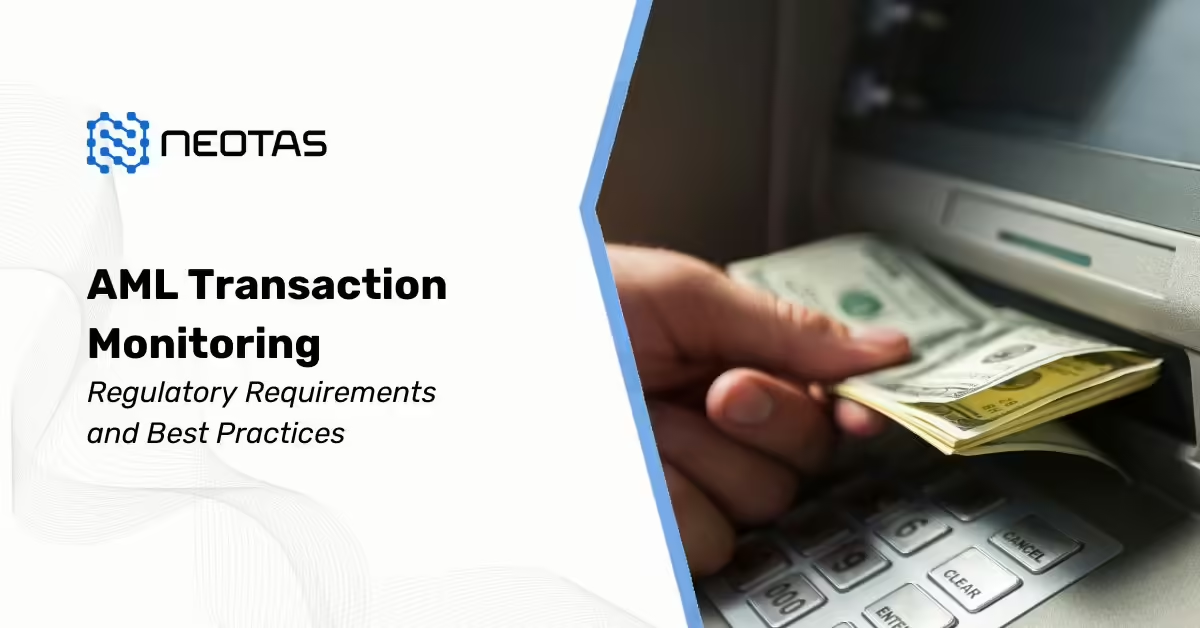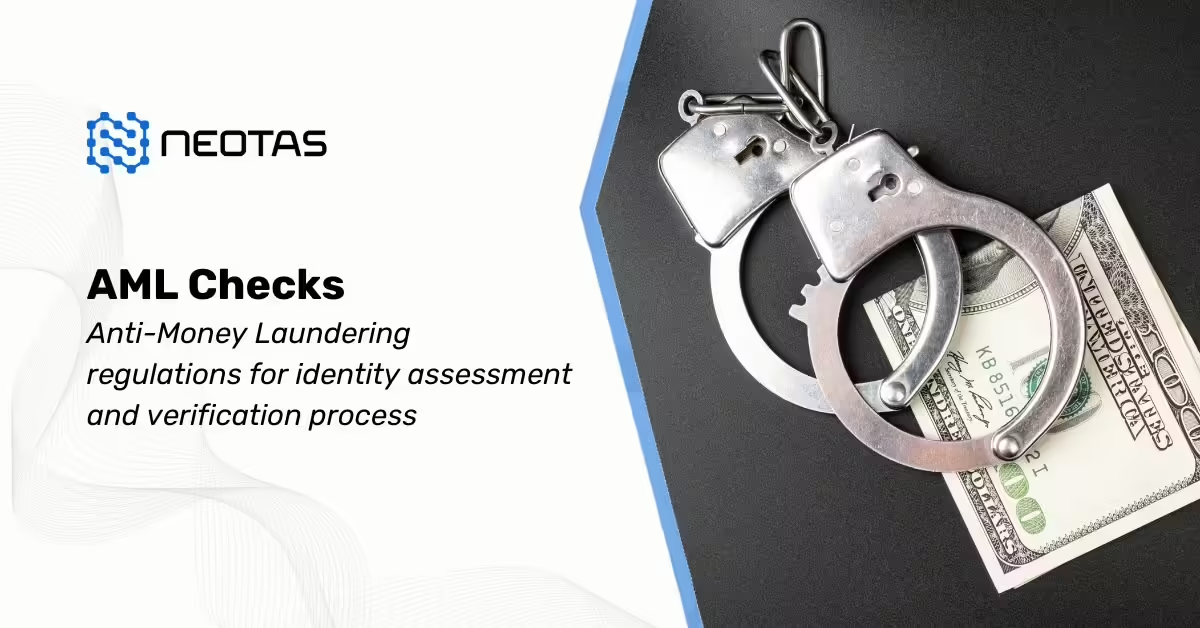What is Customer Due Diligence in Banking and Financial Services?
Customer Due Diligence (CDD) is a cornerstone of risk management and regulatory compliance in the banking and financial services sector. It encompasses a set of processes and procedures that financial institutions employ to verify the identity of their clients and assess the potential risks associated with their business relationships.
Its primary objective is to safeguard institutions against financial crimes such as money laundering, terrorist financing, and other illicit activities. By implementing robust CDD procedures, financial entities not only comply with legal obligations but also bolster their resilience against potential risks that could undermine financial stability and integrity.
Customer Due Diligence in Banking
In today’s interconnected global economy, where financial transactions span continents in seconds, the need for stringent CDD measures cannot be overstated. Financial institutions serve as gatekeepers entrusted with the task of verifying the identities and legitimacy of their customers. This responsibility extends beyond mere procedural compliance; it encompasses a proactive stance in protecting the financial system from abuse by criminal elements seeking to exploit vulnerabilities for illicit gain.
What is Customer Due Diligence (CDD) and its significance in risk management and compliance.
At its core, CDD involves gathering and analysing information about customers to establish their true identity, understand the nature of their business activities, and evaluate the level of risk they may pose to the institution. This process goes beyond mere identification checks; it requires a comprehensive assessment of a customer’s financial profile, transaction patterns, and potential exposure to high-risk factors.
The significance of CDD in risk management lies in its ability to enable financial institutions to make informed decisions about whether to establish or maintain business relationships with particular clients. By thoroughly vetting customers, banks can identify and mitigate potential risks before they materialise into actual threats. This proactive approach not only protects the institution’s reputation and financial stability but also contributes to the overall resilience of the financial system.
From a compliance perspective, CDD is an essential component of anti-money laundering (AML) and counter-terrorist financing (CTF) frameworks. Regulatory bodies worldwide have implemented stringent requirements for financial institutions to conduct due diligence on their customers. Failure to meet these obligations can result in severe penalties, reputational damage, and loss of operating licenses.
Moreover, effective CDD practices foster trust and transparency in financial transactions, enhancing the credibility of financial institutions in the eyes of regulators, partners, and customers alike. By demonstrating a commitment to robust due diligence processes, banks and financial service providers can position themselves as responsible stewards of the financial system, thereby strengthening their market position and fostering long-term sustainability.
Customer Due Diligence is not merely a regulatory checkbox; it is a fundamental pillar of sound financial practice that underpins the stability, integrity, and efficiency of the global financial ecosystem.
Customer Due Diligence in Mitigating Financial Crime Risks
Customer Due Diligence (CDD) plays a pivotal role in safeguarding the integrity of the financial system by mitigating various financial crime risks, including money laundering, terrorist financing, and other illicit activities. The importance of CDD extends beyond regulatory compliance to encompass proactive risk management and protection of institutional reputation.
Enhancing Risk Management
Effective CDD practices enable financial institutions to identify and assess the inherent risks associated with their customers and transactions. By conducting thorough due diligence, institutions can categorize customers based on their risk profiles, distinguishing between low, medium, and high-risk entities. This risk-based approach facilitates targeted risk mitigation strategies, allocating resources proportionately to the level of risk posed by each customer.
Preventing Money Laundering and Terrorist Financing
One of the primary objectives of CDD is to prevent criminals from exploiting financial institutions for illicit purposes, such as laundering money derived from criminal activities or financing terrorist organizations. Rigorous identity verification, background checks, and transaction monitoring mechanisms are integral to detecting suspicious activities and ensuring that funds are not unlawfully integrated into the financial system.
Upholding Regulatory Compliance
Compliance with Anti-Money Laundering (AML) and Counter-Terrorist Financing (CTF) regulations is a legal obligation for financial institutions worldwide. CDD serves as a cornerstone of AML frameworks, requiring institutions to establish and maintain robust policies, procedures, and controls to detect and deter financial crime. Failure to comply with CDD requirements can result in severe penalties, reputational damage, and legal consequences for institutions, underscoring the critical importance of effective CDD implementation.
Strengthening Customer Relationships
While stringent CDD measures are essential for regulatory adherence and risk management, they also contribute to building trust and credibility with customers. Transparent communication of CDD requirements and procedures fosters a sense of security among clients, reassuring them that their financial transactions are conducted within a secure and compliant environment. By prioritizing customer due diligence, financial institutions demonstrate their commitment to ethical business practices and responsible financial stewardship.
Link Between CDD and Anti-Money Laundering (AML) Regulations
The relationship between Customer Due Diligence (CDD) and Anti-Money Laundering (AML) regulations is symbiotic, with CDD forming an integral component of AML frameworks aimed at combating financial crime and protecting the integrity of the global financial system.
Foundation of AML Frameworks
AML regulations mandate that financial institutions implement robust CDD procedures as part of their compliance obligations. CDD requirements are explicitly outlined in AML laws and regulations issued by regulatory authorities, detailing the specific steps institutions must take to verify the identity of customers, assess their risk profiles, and monitor transactions for suspicious activities. By adhering to these regulatory mandates, institutions contribute to the overarching goal of preventing money laundering, terrorist financing, and other illicit financial activities.
Role in Detecting Suspicious Activities
CDD serves as a frontline defense against financial crime by enabling institutions to identify and investigate potentially suspicious activities. Through thorough customer profiling and transaction monitoring, institutions can detect anomalies, unusual patterns of behavior, or transactions inconsistent with a customer’s known profile. Early detection of suspicious activities allows institutions to take prompt action, including filing Suspicious Activity Reports (SARs) to relevant authorities, thereby disrupting illicit financial flows and mitigating associated risks.
Compliance and Regulatory Expectations
Effective CDD practices are essential for ensuring compliance with AML regulations, which set forth stringent requirements for customer identification, due diligence, and ongoing monitoring. Regulatory expectations dictate that institutions establish risk-based CDD policies tailored to their business operations and customer base, incorporating measures to verify customer identities, assess transactional risks, and maintain comprehensive records of CDD activities. Non-compliance with AML/CDD regulations can lead to severe penalties, sanctions, and reputational damage, underscoring the imperative for institutions to adopt robust CDD frameworks aligned with regulatory standards.
Evolution of AML/CDD Practices
The landscape of AML/CDD practices continues to evolve in response to emerging threats, technological advancements, and regulatory developments. Financial institutions are increasingly adopting innovative technologies such as artificial intelligence (AI), machine learning, and big data analytics to enhance the effectiveness and efficiency of CDD processes. These technologies enable more sophisticated risk assessments, real-time transaction monitoring, and predictive analytics, bolstering institutions’ capabilities to combat financial crime while maintaining compliance with evolving regulatory requirements.
The link between CDD and AML regulations is inseparable, with CDD serving as a cornerstone of AML frameworks aimed at safeguarding the financial system from abuse by criminals. By prioritizing robust CDD practices, financial institutions not only fulfill their regulatory obligations but also contribute to global efforts to combat financial crime and uphold the integrity of the financial system
When Does Customer Due Diligence (CDD) Need to be Applied?
Customer Due Diligence (CDD) is a continuous obligation for financial institutions, applied in various scenarios to ensure regulatory compliance and mitigate financial risks associated with customer relationships and transactions.
Customer Due Diligence (CDD) is applied across various scenarios within banking and financial services to ensure compliance with regulatory standards, mitigate financial risks associated with customer relationships and transactions, and safeguard the integrity of the financial system. By adhering to CDD requirements during new customer onboarding, existing customer reviews, high-risk transactions, and continuous monitoring, financial institutions demonstrate their commitment to ethical business practices and regulatory adherence while protecting stakeholders’ interests.
New Customer Onboarding
CDD procedures are mandatory during the onboarding process of new customers. This initial phase involves verifying the identity of the customer, assessing their risk profile based on the nature of their business or financial activities, and collecting relevant information to establish a comprehensive customer profile. By conducting thorough due diligence at the outset, financial institutions mitigate the risk of facilitating transactions for illicit purposes and comply with regulatory requirements from the outset of the customer relationship.
Existing Customer Reviews and Updates
CDD extends beyond new customer onboarding to include periodic reviews and updates for existing customers. Financial institutions are obligated to conduct ongoing monitoring of customer accounts and transactional activities to detect any changes in risk profiles or suspicious behaviors. Regular updates ensure that customer information remains current and accurate, reflecting any material changes in the customer’s business structure, ownership, or transaction patterns. By revisiting CDD measures periodically, institutions uphold regulatory compliance and mitigate risks associated with evolving financial crime threats.
High-Risk Transactions and Activities
CDD must be applied rigorously in the context of high-risk transactions and activities identified through risk-based assessments. Transactions exceeding predefined thresholds in terms of value, complexity, or unusual patterns trigger enhanced due diligence measures. Financial institutions are required to conduct additional verification steps, such as enhanced identity checks, source of funds analysis, and transaction monitoring to mitigate the heightened risks associated with such activities. By scrutinizing high-risk transactions, institutions prevent potential money laundering, terrorist financing, or other illicit activities, thereby safeguarding the integrity of the financial system.
Continuous Monitoring and Periodic Review Requirements
Continuous monitoring forms an integral part of CDD requirements, necessitating ongoing surveillance of customer accounts and transactions. Financial institutions deploy automated monitoring systems and manual reviews to identify suspicious behaviors or anomalies indicative of potential financial crime. Periodic reviews complement continuous monitoring by reassessing the risk profiles of existing customers at regular intervals, ensuring that CDD measures remain commensurate with the level of risk posed by each customer. By maintaining vigilance through continuous monitoring and periodic reviews, institutions uphold regulatory obligations, mitigate financial risks, and protect the institution’s reputation from association with illicit activities.
Customer Due Diligence Process Flow in Banking and Financial Services
Customer Due Diligence (CDD) is a structured process implemented by banking and financial institutions to assess and manage risks associated with their customers. This process involves several key stages aimed at gathering information, verifying identities, assessing risks, and applying appropriate due diligence measures.
1. Collecting Customer Information
During the initial stage of CDD, financial institutions collect various types of information to establish a comprehensive profile of their customers.
Types of Information Required:
- Personal Information: Name, date of birth, address, national identification number.
- Financial Information: Source of funds, income details, assets and liabilities.
- Business Details: Company structure, ownership information, nature of business activities.
Sources of Information Gathering:
- Documents: Government-issued IDs, utility bills, bank statements, business licenses.
- Databases: Credit bureaus, sanctions lists, regulatory databases, public records.
2. Verifying Customer Information
Verification of customer information is crucial to ensure its accuracy and authenticity, thereby reducing the risk of fraudulent activities.
Methods for Verifying Identity and Information Authenticity:
- Document Verification: Checking the validity of submitted documents against recognized standards and issuing authorities.
- Database Checks: Cross-referencing customer details with external databases to verify consistency and detect discrepancies.
- Interviews: Direct communication with the customer to validate information provided.
Importance of Reliable Data Sources:
- Utilizing reputable and reliable data sources enhances the accuracy of information verification.
- Dependable data sources reduce the likelihood of errors or fraudulent attempts to misrepresent customer identities or financial activities.
3. Identity Verification
Identity verification is a critical component of CDD, ensuring that customers are who they claim to be and preventing identity theft and fraud.
Techniques Used for Identity Verification:
- Biometrics: Facial recognition, fingerprint scanning, voice recognition.
- Document Authentication: Analyzing security features on IDs, passports, and other official documents.
- Digital Identity Verification: Using online platforms and services to verify identities remotely.
Compliance with Local and International Identity Verification Standards:
- Adherence to local regulatory requirements and international standards (e.g., FATF guidelines) ensures consistency and reliability in identity verification processes.
- Compliance mitigates legal risks and supports efforts to combat money laundering and terrorist financing activities.
4. Assigning a Risk Score
The risk-based approach to CDD involves assessing the level of risk posed by each customer based on various factors.
Risk-Based Approach to CDD:
- Evaluating customer profiles, business activities, geographical locations, and transactional behaviors to determine risk levels.
- Classifying customers as low-risk, medium-risk, or high-risk based on identified risk factors.
Factors Influencing Risk Assessment:
- Customer Profile: Nature of business, industry sector, geographic location.
- Transactional Behavior: Frequency and size of transactions, unusual or complex transactions, patterns of activity inconsistent with the customer’s profile.
5. High-Risk Customers
Identifying and managing high-risk customers is essential for implementing enhanced due diligence measures.
Definition and Identification of High-Risk Customers:
- Customers involved in industries prone to money laundering or terrorist financing activities (e.g., gambling, cash-intensive businesses).
- Customers with complex ownership structures, politically exposed persons (PEPs), or those with adverse media mentions.
Enhanced Due Diligence (EDD) Requirements for High-Risk Customers:
- Conducting more extensive background checks and verification procedures.
- Monitoring transactions more closely and frequently.
- Obtaining additional documentation and information to verify the legitimacy of business activities and funding sources.
6. Enhanced Due Diligence in Financial Services
Enhanced Due Diligence (EDD) entails specific procedures designed to mitigate higher risks associated with certain customers.
Detailed Procedures and Examples of EDD:
- Source of Wealth Verification: Ensuring funds originate from legitimate sources and understanding the customer’s financial background.
- Enhanced Monitoring: Increased scrutiny of transactions, including large transfers or unusual patterns of activity.
- Senior Management Approval: Involvement of senior management in decision-making for high-risk customer relationships.
Regulatory Expectations for High-Risk Client Management:
- Compliance with stringent regulatory requirements and guidelines, such as those set forth by AML/CFT regulations.
- Maintaining comprehensive records and audit trails of EDD processes to demonstrate compliance during regulatory inspections.
The Customer Due Diligence (CDD) process in banking and financial services is a structured approach aimed at gathering, verifying, and assessing customer information to manage risks effectively. By applying CDD measures comprehensively and consistently, institutions strengthen their compliance with regulatory requirements, mitigate financial crime risks, and protect the integrity of the financial system.
Complete Regulatory Protection for Banking and Financial Services
Regulatory protection in banking and financial services encompasses comprehensive measures to ensure adherence to legal requirements, mitigate risks, and safeguard the integrity of financial transactions.
1. Ongoing Monitoring
Ongoing monitoring is essential for maintaining vigilance over customer transactions and activities, thereby enhancing regulatory compliance and mitigating financial crime risks.
Importance of Continuous Surveillance:
Continuous surveillance allows financial institutions to detect and respond promptly to suspicious activities, anomalies, or deviations from expected patterns. By monitoring transactions in real-time or on a periodic basis, institutions can identify potential risks and mitigate them before they escalate.
Technologies and Tools for Automated Monitoring:
- Transaction Monitoring Systems: Automated systems that analyze transactional data to detect unusual patterns or behaviors indicative of money laundering, fraud, or other illicit activities.
- Risk Scoring Models: Algorithms that assess transactional risks based on predefined criteria, such as transaction amount, frequency, and customer profile.
- Machine Learning and AI: Technologies that enhance the efficiency and accuracy of monitoring by adapting to evolving patterns of financial crime and reducing false positives.
Automated monitoring tools not only streamline compliance efforts but also enable proactive risk management, ensuring that suspicious activities are identified and addressed in a timely manner.
2. Investigation and Reporting
Financial institutions must have robust procedures in place for investigating suspicious activities and fulfilling reporting obligations to regulatory authorities.
Responding to Suspicious Activities:
When suspicious activities are identified through ongoing monitoring or other means, institutions must conduct thorough investigations to determine the legitimacy of the transactions. This process may involve gathering additional information, analyzing transactional details, and assessing the potential risk posed by the customer or transaction.
Reporting Obligations to Regulatory Authorities:
Financial institutions are required to report suspicious activities to relevant regulatory authorities, such as financial intelligence units (FIUs) or law enforcement agencies. Reporting obligations aim to facilitate investigations into financial crime, disrupt illicit activities, and protect the integrity of the financial system.
- Suspicious Activity Reports (SARs): Formal reports submitted to regulatory authorities detailing suspicious transactions or activities that may indicate money laundering, terrorist financing, or other criminal behavior.
- Compliance with Regulatory Requirements: Adhering to specific timelines, formats, and content requirements prescribed by regulatory authorities for SARs ensures compliance and supports effective collaboration with law enforcement agencies.
Effective investigation and reporting processes not only fulfill regulatory obligations but also contribute to maintaining trust and confidence in the financial institution’s commitment to combating financial crime and protecting stakeholders’ interests.
Complete regulatory protection for banking and financial services involves ongoing monitoring of transactions, leveraging advanced technologies for automated surveillance, and implementing robust procedures for investigating and reporting suspicious activities. By adhering to regulatory requirements and adopting proactive measures, institutions enhance their resilience against financial crime risks while upholding the integrity and stability of the financial system.
Tips for Building Trust and Security
Effective CDD practices are instrumental in building trust and confidence among stakeholders, including customers, investors, and regulators. Transparent and rigorous CDD procedures reassure stakeholders that the institution operates with integrity and prioritizes their financial security. By safeguarding customer assets and personal information through stringent CDD protocols, institutions enhance their reputation and credibility, fostering long-term relationships based on trust and transparency.
Building trust in your business is crucial for maintaining strong relationships with customers and stakeholders. Here are key tips to enhance trust through effective practices:
1. Build Trust with Customer Due Diligence
Communication Strategies for Transparency:
- Clear Policies: Communicate CDD policies clearly to customers, outlining why they are necessary and how they protect their interests.
- Transparency: Provide transparency in CDD procedures, ensuring customers understand the purpose and implications of information collection and verification.
Customer Education on CDD Processes:
- Guidance: Educate customers about CDD requirements and procedures through accessible resources and support channels.
- Empowerment: Empower customers by explaining how CDD safeguards them from financial crime risks, building confidence in your commitment to their security.
2. Choose a Configurable KYC Solution
Benefits of Automated KYC Solutions:
- Efficiency: Automate KYC processes to streamline customer onboarding and ongoing monitoring, reducing manual effort and enhancing accuracy.
- Compliance: Ensure compliance with regulatory standards by leveraging automated checks and updates within the KYC solution.
Integration with Existing Systems and Workflows:
- Seamless Integration: Integrate KYC solutions with existing systems and workflows to maintain operational continuity and enhance data security.
- Scalability: Scale KYC solutions to meet growing business needs while maintaining efficiency and compliance standards.
3. Balance Due Diligence with Customer Experience
Improving Customer Journey during CDD Processes:
- User-Friendly Interface: Design user-friendly interfaces for CDD processes, making it intuitive and straightforward for customers to provide required information.
- Efficient Processes: Streamline CDD procedures to minimize customer effort and time while ensuring thorough due diligence.
Personalization without Compromising Security:
- Customization: Personalize customer interactions during CDD without compromising security measures, ensuring tailored experiences while maintaining compliance.
- Data Protection: Prioritize data security and privacy throughout the customer journey, reassuring customers of their information’s safety.
By implementing these strategies, businesses can foster trust, enhance customer satisfaction, and demonstrate commitment to regulatory compliance and security standards in the dynamic landscape of banking and financial services.
Frequently Asked Questions
What is Anti-Money Laundering (AML)?
AML refers to laws, regulations, and procedures intended to prevent criminals from disguising illegally obtained funds as legitimate income. It’s crucial for protecting financial systems from abuse and ensuring compliance with regulatory standards globally.
What is the connection between AML and Customer Due Diligence (CDD)?
CDD is a key component of AML practices. It involves verifying customers’ identities, assessing their risks, and monitoring transactions to detect suspicious activities, thus supporting AML efforts.
What is Know Your Customer (KYC)?
KYC is a process that financial institutions use to verify the identity of their customers before providing services. It helps assess risks, prevent fraud, and ensure compliance with regulatory requirements.
How does KYC contribute to financial services?
KYC ensures that institutions understand their customers’ identities and activities, reducing risks associated with money laundering, terrorist financing, and fraud. It builds trust, enhances compliance, and protects against financial crimes.
What are the differences between KYC and Customer Due Diligence (CDD)?
KYC is a subset of CDD, focusing specifically on verifying customer identities. CDD, on the other hand, encompasses broader risk assessments, ongoing monitoring, and compliance measures beyond initial identification.
What are the basic requirements of Customer Due Diligence (CDD)?
Basic CDD involves verifying customer identities, understanding the nature of their activities, and assessing the risk they pose. It’s fundamental for complying with regulatory obligations and safeguarding against financial crime.
What are the advanced requirements of Customer Due Diligence (CDD)?
Advanced CDD includes enhanced measures for high-risk customers, such as conducting more detailed background checks, monitoring transactions more closely, and obtaining additional documentation to verify legitimacy.
What are AML checks and why are they important?
AML checks involve verifying customer identities, monitoring transactions, and reporting suspicious activities to prevent money laundering and terrorist financing. They’re critical for regulatory compliance and protecting financial systems.
What are the key AML regulations in the UK and globally?
In the UK, AML regulations are governed by the Money Laundering Regulations. Globally, regulations are guided by standards set by the Financial Action Task Force (FATF), ensuring consistency in AML efforts worldwide.
What is the meaning of Customer Due Diligence (CDD) in financial contexts?
CDD refers to the process where financial institutions collect and verify information about their customers to assess risks and ensure compliance with regulatory standards, mitigating financial crime risks effectively.
Could you provide practical examples of Customer Due Diligence (CDD) implementation?
Examples include verifying customer identities with government-issued IDs, conducting background checks on beneficial owners, and monitoring transactions for unusual patterns to detect potential money laundering activities. These practices uphold regulatory requirements and protect against financial crime.
What are the objectives of Customer Due Diligence (CDD)?
CDD aims to mitigate risks associated with money laundering, terrorist financing, and other financial crimes by ensuring that financial institutions understand their customers, their activities, and the risks they may pose.
How does Customer Due Diligence (CDD) help prevent financial crimes?
By verifying customer identities, assessing their risk profiles, and monitoring their transactions, CDD helps detect and deter potential money laundering, terrorist financing, and fraud activities within the financial system.
What are the regulatory guidelines for Customer Due Diligence (CDD)?
Regulatory guidelines require financial institutions to establish and maintain risk-based CDD procedures in accordance with local laws and international standards, such as those outlined by the Financial Action Task Force (FATF).
What is Enhanced Due Diligence (EDD) and when is it required?
EDD involves additional scrutiny and verification procedures for customers deemed to pose higher risks based on factors like their business activities, geographical location, or public exposure. It is required for high-risk customers to ensure thorough risk management.
How does CDD support regulatory compliance in financial institutions?
CDD ensures compliance with Anti-Money Laundering (AML) and Counter-Terrorist Financing (CTF) regulations by establishing procedures for customer identification, risk assessment, ongoing monitoring, and reporting suspicious activities to regulatory authorities.
What are the consequences of non-compliance with Customer Due Diligence (CDD) requirements?
Non-compliance with CDD requirements can result in legal and regulatory penalties, reputational damage, and loss of business opportunities for financial institutions. It may also expose institutions to increased risks of financial crime.
What role does technology play in enhancing Customer Due Diligence (CDD) processes?
Technology enables automation of CDD procedures, improving efficiency, accuracy, and scalability. It facilitates data analysis, monitoring of large volumes of transactions, and integration with existing systems to enhance compliance efforts.
How can financial institutions balance Customer Due Diligence (CDD) requirements with customer experience?
Financial institutions can balance CDD requirements with customer experience by optimizing processes, providing clear communication about the purpose of CDD, and minimizing the impact on the customer journey while ensuring thorough compliance with regulatory standards.
What are the global standards for Know Your Customer (KYC) and how do they impact financial institutions?
Global standards for KYC are set by organizations like FATF, guiding financial institutions in implementing robust procedures to verify customer identities, assess risks, and prevent financial crimes across international borders.
What are the ethical considerations in Customer Due Diligence (CDD) processes?
Ethical considerations in CDD processes include respecting customer privacy, ensuring transparency in data collection and use, and maintaining fairness in assessing risks and applying due diligence measures to all customers consistently.
About Neotas Due Diligence
Neotas Platform covers 600Bn+ archived web pages, 1.8Bn+ court records, 198M+ corporate records, global social media platforms, and 40,000+ Media sources from over 100 countries to help you build a comprehensive picture of the team. It’s a world-first, searching beyond Google. Neotas’ diligence uncovers illicit activities, reducing financial and reputational risk.
AML Solutions:
- Risk-Based Approach (RBA) to AML & KYC risk management
- Anti-Money Laundering (AML) Compliance
- Anti-Money Laundering (AML) Checks
- Anti-Money Laundering (AML) Regulations
- Anti-Money Laundering (AML) Compliance Checklist
- Anti-Money Laundering (AML) Compliance Checklist for Banks
- Anti-Money Laundering (AML) Transaction Monitoring
- Money Laundering Reporting Officer (MLRO) – Roles and Responsibilities of an MLRO
- What is Customer Due Diligence in Banking and Financial Services?
Due Diligence Solutions:
- Enhanced Due Diligence
- Management Due Diligence
- Customer Due Diligence
- Simplified Due Diligence
- Third Party Risk Management
- Open Source Intelligence (OSINT)
- Customer Due Diligence Requirements
- Introducing the Neotas Enhanced Due Diligence Platform
Due Diligence Case Studies:
- Case Study: OSINT for EDD & AML Compliance
- Overcoming EDD Challenges on High Risk Customers
- Neotas Open Source Intelligence (OSINT) based AML Solution sees beneath the surface
- ESG Risks Uncovered In Investigation For Global Private Equity Firm
- Management Due Diligence Reveals Abusive CEO
- Ongoing Monitoring Protects Credit Against Subsidiary Threat
- AML Compliance and Fraud Detection – How to Spot a Money Launderer and Prevent It
- What is Customer Due Diligence in Banking and Financial Services?



 Financial Crime Compliance Trends 2024
Financial Crime Compliance Trends 2024